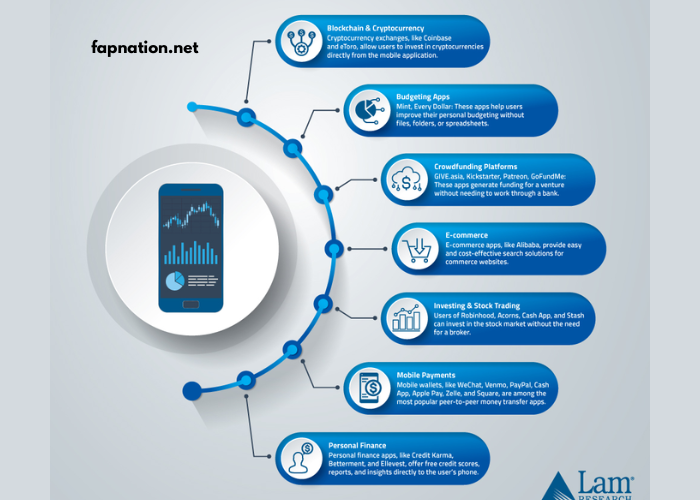In today’s fast-paced and ever-evolving business landscape, effective leadership is paramount to success. The role of a business leader has grown more complex, requiring a balance between traditional leadership skills and the ability to adapt to rapid technological changes and shifting market demands. This article will explore modern leadership techniques that can help leaders navigate these challenges, inspire their teams, and drive organizational success.
The Evolution of Leadership
Over the past few decades, leadership styles have evolved significantly. The traditional command-and-control approach, which once dominated corporate hierarchies, is no longer sufficient in a world where collaboration, flexibility, and innovation are key to success. Today’s business leaders must cultivate a new set of skills that focus on empowerment, emotional intelligence, and agility.
The Shift from Autocratic to Transformational Leadership
In the past, leaders were often seen as figures of authority who made decisions unilaterally, with little input from their teams. This autocratic leadership style may still work in certain situations, but the modern business environment demands a more inclusive and visionary approach. Transformational leadership, which emphasizes inspiring and motivating employees to achieve their full potential, has emerged as a highly effective style for fostering long-term growth and engagement.
Modern leaders must embrace the role of a mentor, coach, and guide, rather than just a decision-maker. This shift in leadership philosophy fosters greater collaboration, creativity, and innovation, which are essential in today’s competitive business world.
Key Leadership Techniques for Today’s Business Leaders
To lead effectively in today’s business environment, leaders must focus on several critical techniques that help them build stronger teams, adapt to change, and drive performance. Below are some of the most effective leadership strategies that can help modern leaders succeed.
1. Embrace Emotional Intelligence (EI)
Emotional intelligence is the ability to understand and manage your emotions, as well as recognize and influence the emotions of others. For leaders, emotional intelligence is crucial because it helps build trust, improve communication, and strengthen relationships within teams. Leaders who demonstrate high EI can create a work environment where employees feel valued, heard, and supported.
Why Emotional Intelligence Matters
In high-pressure situations, leaders with strong emotional intelligence are better equipped to stay calm, make rational decisions, and provide support to their teams. They are also more adept at resolving conflicts, as they can empathize with different perspectives and mediate disagreements effectively. Additionally, emotionally intelligent leaders are skilled at motivating employees, fostering a positive workplace culture, and encouraging collaboration.
2. Develop a Growth Mindset
A growth mindset, popularized by psychologist Carol Dweck, is the belief that abilities and intelligence can be developed through dedication and hard work. Leaders who adopt a growth mindset encourage their teams to view challenges as opportunities for learning and development. This attitude fosters resilience, creativity, and innovation, which are all crucial to navigating the complexities of modern business.
How a Growth Mindset Drives Success
Leaders with a growth mindset are not afraid to take risks or make mistakes. They see failure as a learning experience, not a setback. This encourages their teams to take initiative, experiment with new ideas, and continuously improve. In organizations where growth is emphasized, employees feel empowered to develop their skills, ultimately contributing to the overall success of the company.
3. Prioritize Communication and Transparency
Effective communication is at the core of successful leadership. Modern leaders must communicate clearly, regularly, and transparently with their teams. Transparency builds trust, helps prevent misunderstandings, and ensures that employees are aligned with the company’s vision and goals.
Best Practices for Communication
Leaders should foster an open-door policy, allowing team members to share ideas, concerns, and feedback. Regular team meetings, one-on-one check-ins, and digital communication tools can also help ensure that communication remains fluid and efficient. Additionally, leaders should be transparent about company goals, challenges, and successes, creating a culture of accountability and trust.
4. Empower Your Team
Empowering employees is a powerful leadership technique that leads to higher levels of engagement, motivation, and performance. Leaders who empower their teams delegate responsibility, encourage decision-making, and provide opportunities for growth and development.
How Empowerment Enhances Productivity
When employees feel empowered, they are more likely to take ownership of their work and go above and beyond to contribute to the company’s success. Empowered teams are also more innovative, as they are encouraged to bring new ideas to the table and take initiative without fear of failure. Leaders can empower their teams by providing the necessary resources, offering training and development opportunities, and recognizing individual and team achievements.
5. Foster a Collaborative Work Environment
In today’s business world, collaboration is key. Effective leaders understand the importance of building a culture of teamwork, where employees feel supported and encouraged to collaborate with their colleagues. This is particularly important as businesses increasingly rely on cross-functional teams to solve complex problems and drive innovation.
Collaboration Tools and Techniques
To foster collaboration, leaders should encourage open communication, promote the sharing of ideas, and create a safe space for team members to contribute without judgment. Implementing collaboration tools, such as project management software, communication platforms, and shared workspaces, can also help streamline team interactions and ensure that everyone is on the same page.
Leaders should also model collaborative behavior by being accessible and approachable, and by encouraging employees to work together across departments and levels within the organization.
6. Adaptability and Agility
In a rapidly changing business environment, adaptability is essential for leadership success. Modern leaders must be able to pivot quickly in response to new challenges, opportunities, or market conditions. This requires not only flexibility but also the ability to make decisions with limited information and act decisively.
How to Cultivate Agility in Leadership
Leaders can cultivate adaptability by remaining open to new ideas, encouraging experimentation, and promoting a culture of continuous improvement. They should also be willing to embrace change and model resilience for their teams. By demonstrating agility in their decision-making and leadership approach, leaders can help their organizations stay competitive in an ever-changing market.
7. Lead by Example
One of the most powerful leadership techniques is leading by example. Modern business leaders must set the tone for their organizations by modeling the behaviors, values, and attitudes they expect from their teams. When leaders demonstrate a strong work ethic, integrity, and a commitment to excellence, they inspire their employees to do the same.
The Impact of Leading by Example
Leaders who lead by example create a culture of accountability, respect, and high performance. Employees are more likely to follow the example set by their leaders, which can lead to improved morale, higher levels of trust, and greater alignment with the organization’s goals. Leading by example also builds credibility and trust, which are essential for maintaining positive relationships with employees, clients, and stakeholders.
8. Invest in Personal and Professional Development
Effective leaders understand the importance of continuous learning and self-improvement. To stay ahead of industry trends, expand their skillsets, and enhance their leadership capabilities, modern leaders must invest in their own personal and professional development.
How to Invest in Leadership Growth
Leaders can invest in their development by attending leadership training programs, participating in industry conferences, and seeking feedback from colleagues and employees. They should also stay informed about emerging trends and technologies in their industry and be proactive in acquiring new knowledge and skills. By committing to their own growth, leaders can inspire their teams to do the same, creating a culture of continuous improvement throughout the organization.
Conclusion
Effective leadership is a dynamic and evolving concept that requires modern leaders to embrace a range of skills and techniques. From emotional intelligence and growth mindset to adaptability and collaboration, today’s business leaders must be equipped with the tools and strategies necessary to navigate an increasingly complex and competitive business environment.
By adopting these leadership techniques, leaders can inspire their teams, drive innovation, and achieve sustainable success in the modern business world. The key to effective leadership lies in fostering a positive culture, empowering employees, and continuously evolving to meet the demands of a changing marketplace.
As businesses face new challenges and opportunities, the role of the leader has never been more critical. By embracing these modern leadership techniques, leaders can position themselves—and their organizations—for long-term success.



